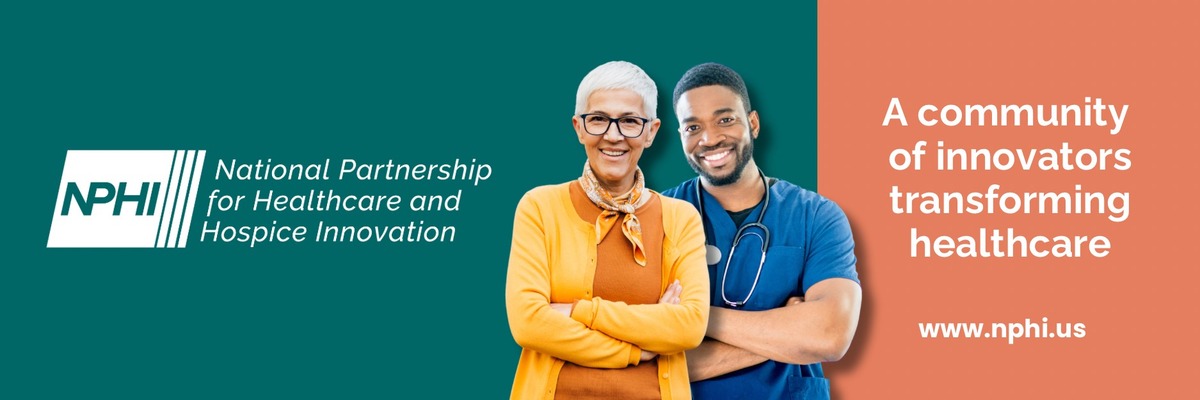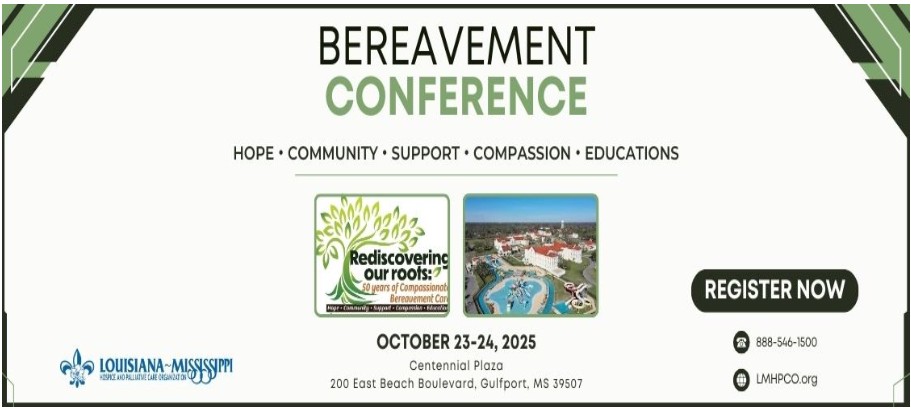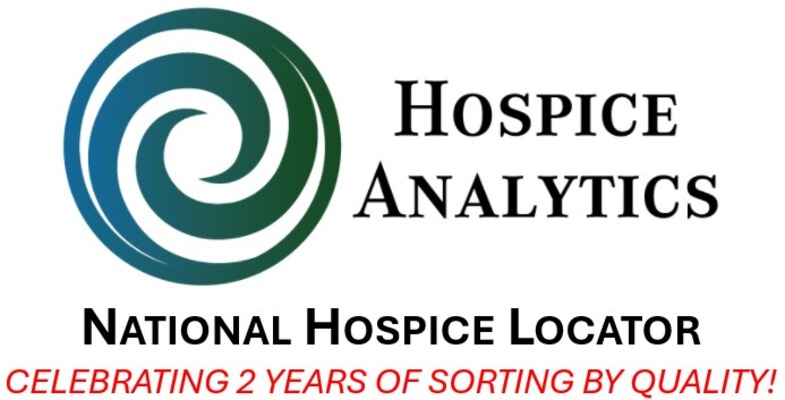Sign up for our free daily newsletters here! Note: subscribers can access our search feature!
Welcome to Hospice & Palliative Care Today, a daily email summarizing numerous topics essential for understanding the current landscape of serious illness and end-of-life care. Teleios Collaborative Network podcasts review Hospice & Palliative Care Today monthly content - click here for these and all TCN Talks podcasts.
2. End-of-life outcomes and staff visits for hospice recipients residing in assisted living
3. Hospice of Santa Barbara’s No One Dies Alone Program ensures that those who are alone and actively dying, have someone at their bedside
5. Instilling hope: A comprehensive model of cancer care for younger adults
Danbury hospice gets $2 million to expand care for children with life-limiting illnesses
Shelton Herald, Bridgeport, CT; by Cris Villalonga-Vivoni; 9/30/25
A Danbury-based nonprofit hospice center is receiving $2 million in state funding to expand its pediatric care services and help more families access specialized end-of-life care. Founded in 1983, Regional Hospice and Home Care of Western Connecticut is the only nonprofit hospice in the state providing hospice care to children under 21 with life-threatening conditions. However, its capacity remains limited amid rising demand. In 2020, there were an estimated 7,800 children in Connecticut with complex medical conditions that limit their life expectancy and could benefit from palliative and hospice care, according to the National Survey of Children’s Health.
End-of-life outcomes and staff visits for hospice recipients residing in assisted living
Journal of the American Medical Directors Association; by Wenhan Guo, Shubing Cai, Yue Li, Brian E McGarry, Thomas V Caprio, Helena Temkin-Greener; 9/26/25
Objectives: ... We hypothesized that more frequent staff visits and specific regulatory provisions would be associated with improved EOL outcomes. ...
Conclusions and implications: Hospice staffing intensity, especially clinical visits, appears to be associated with EOL outcomes for AL residents. AL state regulations are also associated with hospice quality. These findings underscore the role of both organizational practices and regulatory policy in shaping hospice experiences in AL settings.
 |
Hospice of Santa Barbara’s No One Dies Alone Program ensures that those who are alone and actively dying, have someone at their bedside
Santa Barbara Independent, Santa Barbara, CA; by Hospice of Santa Barbara; 9/29/25
Hospice of Santa Barbara’s (HSB) No One Dies Alone (NODA) program has partnered with local senior living facilities in Santa Barbara for over a decade, providing compassionate volunteer support to seniors in their final 24 to 72 hours when family or friends are unavailable. Currently, NODA has 21 trained volunteers serving in the program. Before becoming a NODA volunteer, applicants must graduate from a six-week patient care training and serve as a patient care volunteer for a minimum of 9 months before attending a NODA specific training. Most NODA volunteers have been with the program for years and feel a strong commitment to the work they do.
Rise in late-stage lung cancer in nonsmokers highlights need for awareness and screening
Medscape Medical News; by Evra Taylor; 9/5/25
... The common thinking is that lung cancer is a smoker’s disease, but that isn’t the full picture, Jessica Moffatt, PhD, vice president of programs and health system partnerships at Lung Health Foundation in Toronto, told Medscape Medical News. ... Moffatt and her colleagues are working to dispel the stigma that smokers “get what they deserve.” Rosalyn Juergens, MD, professor of oncology at McMaster University in Guelph, Ontario, and president of Lung Cancer Canada, said, “If you find out someone has lung cancer, your first question shouldn’t be ‘Did you smoke?’ It should be ‘What can I do to help you along this journey?’ ”
 |
Instilling hope: A comprehensive model of cancer care for younger adults
Targeted Oncology; by Andrea Eleazar, MHS and Shane Dormady, MD, PhD; 9/29/25
In the past decade, the incidence of numerous cancer types has increased, particularly among younger adults under age 50. For younger adults, many of whom are primary breadwinners of their households or in the height of their educational or professional careers, a cancer diagnosis at this life stage can be unexpected and jarring. ... In an interview with Targeted Oncology, Shane Dormady, MD, PhD, medical director of El Camino Health Cancer Center, describes the unique needs and challenges of younger adults, outlines El Camino Health’s comprehensive care strategy, and offers insights and considerations for treating and interacting with this patient population.
Commentary: New York must act now to protect quality hospice care
Times Union; by Cara Pace - CEO of New York's United Hospice, NY Senator Liz Krueger, and NY Assembly Member Amy Paulin; 9/30/25
When your loved one is entering the final stage of their life, who would you rather manage their care: a nonprofit solely dedicated to providing the highest quality care possible? Or a private entity seeking to maximize profits? ... However, for-profit hospices now account for 70% of the market, up from 5% 35 years ago. This comes despite studies showing that for-profit hospices provide fewer essential services, employ less skilled staff, receive a higher volume of complaints and contribute less to their communities than their nonprofit counterparts. ... That's why we introduced legislation (S.3437/A.565) to prohibit the state from approving new applications for the establishment, construction or increased capacity of for-profit hospice entities. The two existing for-profit providers would not be touched, though their capacity to expand would be limited. The legislation now awaits Gov. Kathy Hochul’s signature.
Editor's Note: For-profit or non-profit status alone does not speak to the quality of care provided by the individual hospice. Some for-profits provide excellent care; some non-profits do not. This article speaks to evidence-based data, quality scores, patterns, trends, and cumulative results from CAHPS, HIS (which is being replaced by the HOPE Tool, effective today), and more. Examine quality scores in your services with the National Hospice Locator (ranked by scores), provided by National Hospice Analytics.
 |
Nevada hospice provider launches first-of-its-kind palliative care in Las Vegas education program
ABNewswire; by Summerlin Hospice and Palliative Care; 9/29/25
Summerlin Hospice and Palliative Care has announced the launch of an innovative educational initiative designed to increase awareness and understanding of specialized comfort care services throughout Nevada. ... Summerlin Hospice and Palliative Care has developed partnerships with local medical centers, healthcare providers, and community organizations to maximize the program’s reach and effectiveness. These collaborations ensure that educational resources reach diverse populations throughout the Las Vegas Valley and surrounding Nevada communities.
C-suites invest in nurse-led clinical research
Becker's Clinical Leadership; by Mariah Taylor; 9/29/25
Nationwide, health systems are increasingly turning to nurse scientists to close evidence gaps, answer pressing clinical questions and translate bedside observations into measurable patient outcomes. ... “Nurses ask the best questions; they are closest to patients and see gaps in care firsthand,” Linda Chlan, PhD, RN, associate dean for nursing research at Rochester, Minn.-based Mayo Clinic, told Becker’s. “But to move from ‘I think this works better’ to real evidence, you need data, and that comes from rigorous scientific inquiry.” This is where nurse scientists fill the gap between curiosity and evidence-based changes in protocols and practices. Nurse scientists help bedside staff build their studies, mentor them through the process, and help them turn data into evidence-based practice and demonstrate return on investment.
 |
Chapters Health System strengthens California health services
Investors Hangout; by Evelyn Baker; 9/30/25
Chapters Health System, renowned as a leading advocate for chronic illness care and the largest nonprofit hospice network in the nation, has recently announced a significant step forward. The organization has finalized its affiliation with Hospice of Santa Cruz County, marking an exciting expansion of the Chapters Health West division within California. ... The integration of Hospice of Santa Cruz County into the Chapters Health West division follows earlier affiliations with established entities like Nathan Adelson Hospice and Willamette Vital Health, enhancing the comprehensive service offerings available in the region.
B2B website navigation: Structure that guides complex buyers
Trajectory; updated 9/29/25
... 42% of users will abandon your website as soon as they experience issues with functionality or usability. ... When someone can't find basic information quickly, they don't just leave your website. They question your company's competence. ... If [the site visitor] can't find the information category they need within 10-20 seconds, they often assume it doesn't exist and leave. That's not much time to prove you have answers to their complex questions. Your navigation must immediately signal that you understand their needs and have the depth of information they require.
Editor's Note: Though written for B2B, these lessons matter for hospice websites (B2C). Patients, caregivers, healthcare decision makers, and family members of diverse generations need clarity in moments of stress. Review your website’s navigation through their intergenerational eyes—can they quickly find what hospice is and how to begin care? Clear pathways reflect the heart of hospice care: guidance and compassion.
 |
[Portugal] End-of-life care in the prison environment (supplement #22)
ehospice, republished from by Portual Plus; 9/25/25
“Inmates who are dependent on assistance have a significant need for help from fellow prisoners,” stated Manuel Almeida dos Santos, secretary-general of the Obra Vicentina de Auxílio aos Reclusos (OVAR) [i.e., St. Vincent de Paul Work to Aid Prisoners], citing the lack of nursing aides and other professionals within prisons. “The shortage of human resources is not limited to prison guards. The deficiencies in prisons are even greater in other areas,” he argued. This concern was echoed by Vítor Ilharco, president of the Associação Portuguesa de Apoio ao Recluso [i.e., Portuguese Association for Prisoner Support], who mentioned cases of sick or elderly inmates who are bedridden, with their families paying “fixed amounts” to other inmates for assistance.
Editor's Note: Log in to your newsletter account, type "prison" in the "Search" field, and compare this with many articles we've published on this topic; notably, "IL law calls for annual report on prison hospice, palliative care" and "Death and redemption in an American prison."
 |
The Fine Print:
Paywalls: Some links may take readers to articles that either require registration or are behind a paywall. Disclaimer: Hospice & Palliative Care Today provides brief summaries of news stories of interest to hospice, palliative, and end-of-life care professionals (typically taken directly from the source article). Hospice & Palliative Care Today is not responsible or liable for the validity or reliability of information in these articles and directs the reader to authors of the source articles for questions or comments. Additionally, Dr. Cordt Kassner, Publisher, and Dr. Joy Berger, Editor in Chief, welcome your feedback regarding content of Hospice & Palliative Care Today. Unsubscribe: Hospice & Palliative Care Today is a free subscription email. If you believe you have received this email in error, or if you no longer wish to receive Hospice & Palliative Care Today, please unsubscribe here or reply to this email with the message “Unsubscribe”. Thank you.



